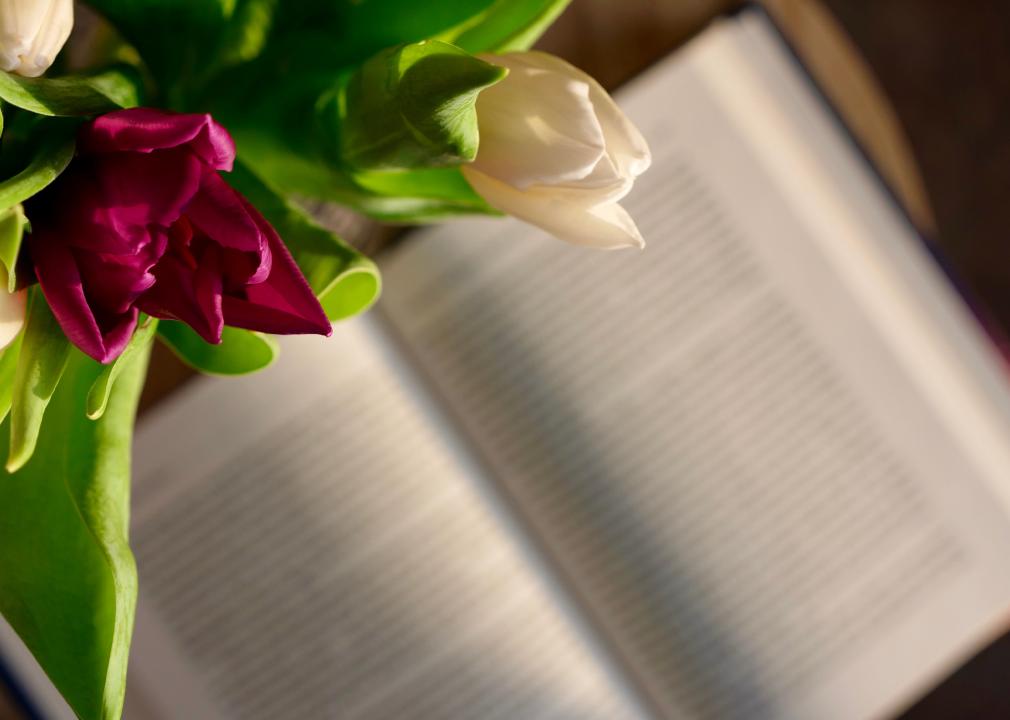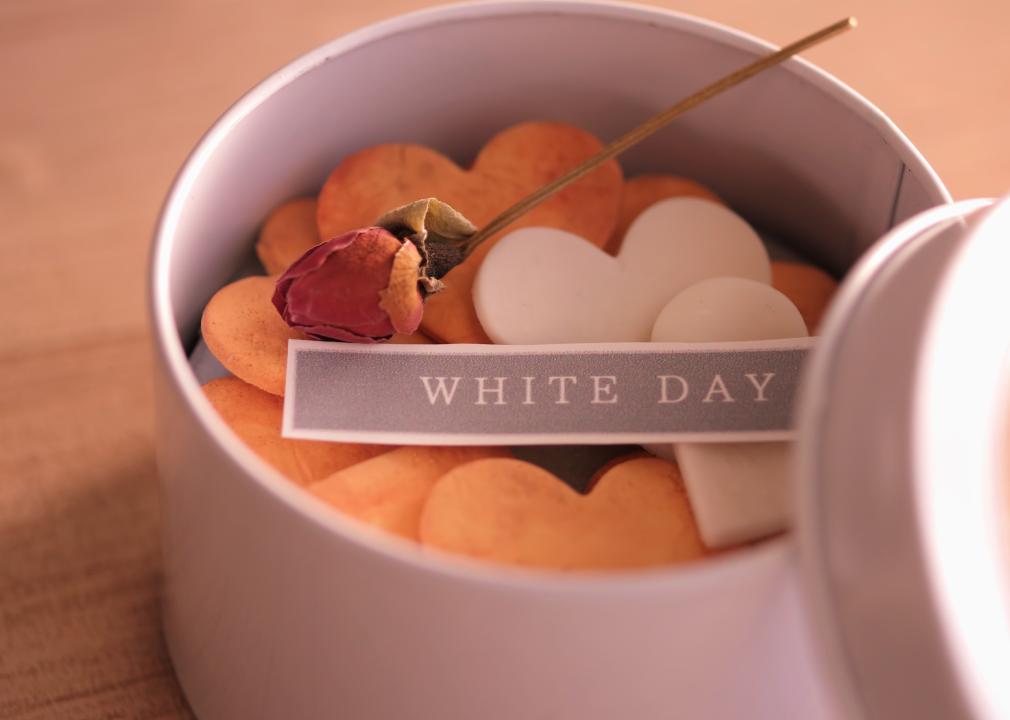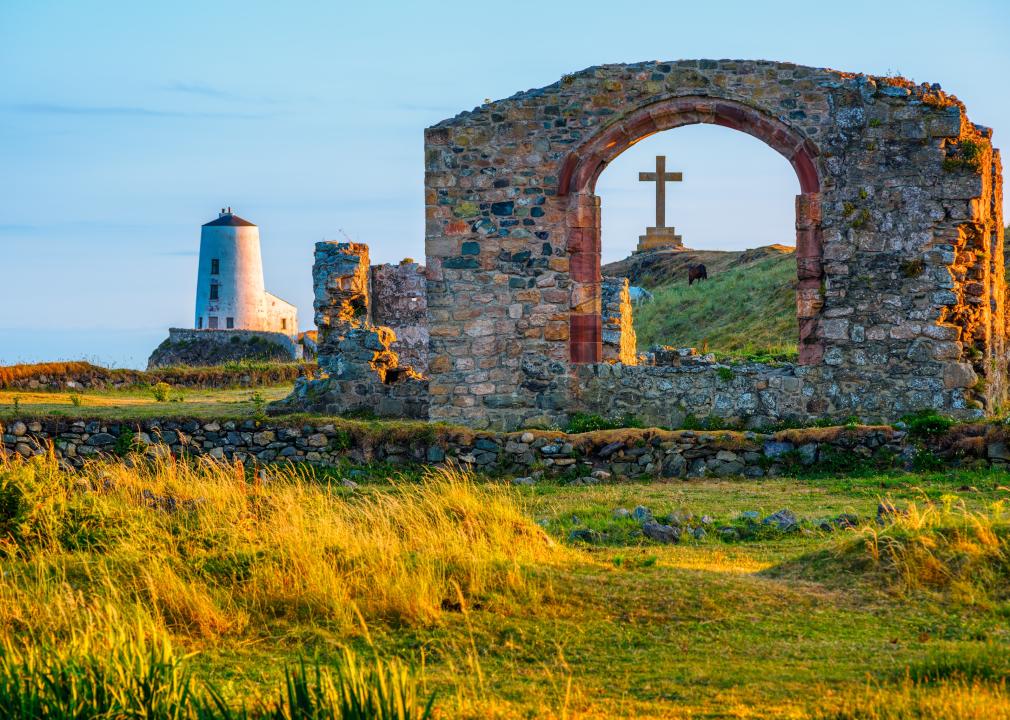5 of the most romantic days in other countries
New Africa // Shutterstock
5 of the most romantic days in other countries
Focus on roses in front of a happy couple.
Valentine’s is a time to gift chocolates, send flowers, and write romantic letters to your loved ones. You might have heard its origin story dating back to an early Christian festival commemorating the martyr Valentine, but it was not until Chaucer came along that Valentine was deemed romantic.
One of the earliest known Valentine poems is his “Parliament of Fowls,” which speaks of birds choosing their mates, a more natural, unmanageable process than, say, marriages arranged for political purposes. Even today, the poem’s opening lines still ring true. “So short our lives, so hard the lessons, so difficult the tests, so sudden the final victory, so tenuous the hope of joy that so easily evaporates into fear—this is what I mean by Love.”
Today, many countries celebrate Valentine’s Day or some version of it. Some people resent the holiday for leaving out singles and setting outsized expectations of romance for couples. Others look forward to the day because it celebrates love—be it romantic or platonic—in any shape or form.
In fact, many parts of Latin America celebrate Día del Amor y Amistad (Day of Love and Friendship) on Feb. 14, and Finland and Estonia recognize this day as Friend’s Day (Ystävänpäivä in Finland, Sõbrapäev in Estonia) as well. Using news articles and reports, Stacker compiled a list of the most romantic days in other countries.
![]()
Rawpixel.com // Shutterstock
China: Qixi
Couple celebrate Valentine’s Day together.
Many folktales revolve around the Milky Way, but perhaps none more tragically romantic than the Chinese. Once a year, magpies flock together across the Milky Way to form a bridge so that Zhī Nü (Weaver Girl) and Niú Láng (Cowherd Boy) can meet. For Zhī Nü is a goddess and Niú Láng is a mere mortal human, and Zhī Nü’s mother, the Queen of Heaven, punished them by creating the Milky Way to separate them forever.
The reunion of those two tragic lovers spawned Qixi, the Chinese Valentine’s Day. It falls annually on the seventh day of the seventh month on the Chinese lunar calendar. People celebrate by worshiping the celestials and floating lotus lanterns on the river for blessings.
It is also a tradition on this day to worship Yue Lao, or the old man under the moon, who is the god of love and marriage in Chinese folklore. Like Cupid, who shoots the arrows of love, Yue Lao binds lovers together with his red strings.
SunnyVideograph // Shutterstock
Spain: Sant Jordi’s Day
Spring flowers seen with a book in the background.
T.S. Eliot may have thought of April as “the cruelest month,” but in Barcelona, and the rest of Catalonia in Spain, it is the most romantic. On April 23, Catalonians celebrate the Day of Books and Roses, where lovers give each other the gift of roses and books.
The day was also called Sant Jordi’s Day, celebrated in the name of the patron saint of Catalonia, Saint George. Legend has it that he killed a dragon in the city of Silene, Libya, to save a princess and gave her a rose that blossomed from the dragon’s spilled blood. Because of this, the most common depiction of Saint George was of him killing the dragon while riding a white horse.
Catalonians have been giving roses to each other as a token of love since the 15th century, but when Spain declared April 23 as Book Day to remember the writer Miguel de Cervantes, the day also became associated with literature. UNESCO’s declaration of World Book and Copyright Day in 1995 further cemented the rose and the book together.
rumo777 // Shutterstock
Japan: White Day
A tin with “White Day” message and miniature cookies.
In 1977, the owner of Ishimura Manseido, a small sweets shop in Fukuoka, Japan, came up with the idea of “Marshmallow Day” after reading a letter in a women’s magazine. The letter lamented that only men received chocolates on Valentine’s Day since women traditionally gave men gifts on this day.
The owner took the reader’s wish to receive marshmallows as a gift in response to the romantic token they gave on Valentine’s Day and began selling them one month after Valentine’s. The confectionery association based in Tokyo eventually took that idea and created White Day, which all sweetmakers could observe.
Since then, March 14, exactly one month after Valentine’s Day, has become known as White Day. It is quite popular in numerous Asian countries, including Japan, Korea, and China. The concept of “return-gifting” (okaeshi), a deeply ingrained Japanese practice of giving a gift in return for a gift as an expression of gratitude, is particularly charming; after all, as the British American poet W.H. Auden wrote, “If equal affection cannot be / Let the more loving one be me.”
stockpexel // Shutterstock
India: Holi
Cheerful young couple celebrating holi festival.
Celebrated as the Festival of Colors, Love, and Spring, Holi is the most colorful festival in India. It falls on the month of Phalguna on the Hindu calendar, which is more or less around March. Holi marks the beginning of spring and the end of winter, the season symbolizing the blossoming of love.
The origin of Holi is recorded in many ancient Indian literature. One popular legend shows its name is rooted in another: Holika, sister of the wicked king Hiranyakashipu. She intended to help her brother kill his own son, Prahlad, who offended the king by worshiping Vishnu. Holika, who had a cloak that shielded her from fire, invited Prahlad to sit on a pyre with her. However, because Holika used her power for evil, the plan backfired. Holika was burned to death, whereas Prahlad was spared.
Today, Holi is celebrated both within and outside India. Like Diwali, it is one of the most significant festivals for Indians and South Asians. The day before Holi, people burn pyres to reenact the triumph of good over evil. On the day of the celebration, they throw colored powders, turning entire streets into colorful festivities.
Boris Stroujko // Shutterstock
Wales: Dydd Santes Dwynwen
Twr Mawr Lighthouse and the ruins of historical St Dwynwen’s Church.
Every year on Jan. 25, the Welsh celebrate their own Valentine’s Day: St. Dwynwen’s Day, or Dydd Santes Dwynwen in Welsh. It is the most romantic day of the year in Wales and has gained more traction recently.
St. Dwynwen was said to be a Welsh princess-turned-nun, her name meaning “she who leads a blessed life.” Despite her fortunate name, Dwynwen had difficulty pursuing her true love.
The story says that her father has promised her in marriage, even though she already loved another man, Maelon Dyfodrull. Upset, Dwynwen ran away to the forest and asked for God’s help, resulting in Maelon being turned to ice. Afterward, God granted her three wishes, and she used them to free Maelon and bless all the true lovers in the world.
The increasing popularity of St. Dwynwen’s Day also adds to the local tourism industry. People flock to St. Dwynwen’s Church at Llanddwyn Island on Anglesey. Others make or buy handcrafted lovespoons as a sign of their handiness and ability to provide for the family in the future. St. Dwynwen is also the patron saint of ill animals.
Story editing by Carren Jao. Copy editing by Paris Close. Photo selection by Clarese Moller.











